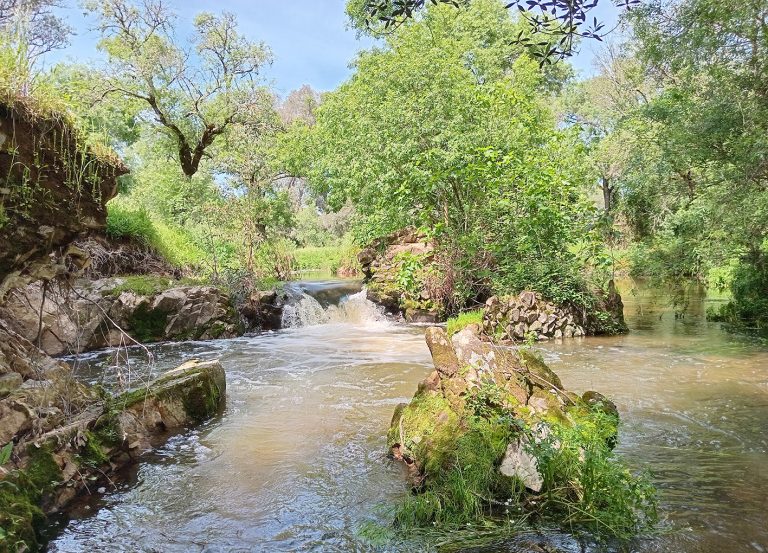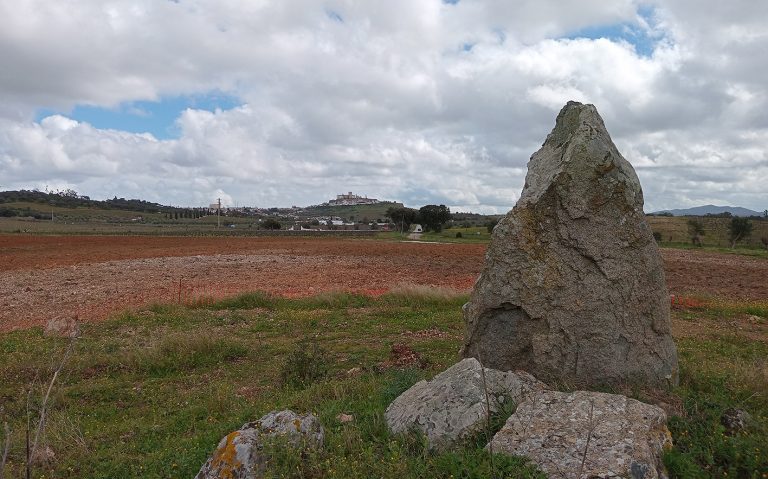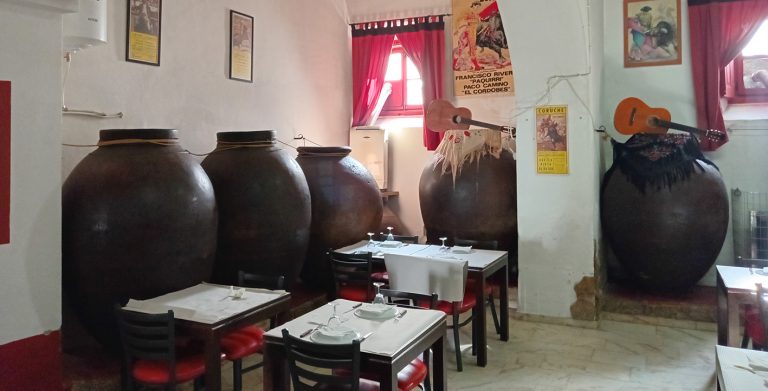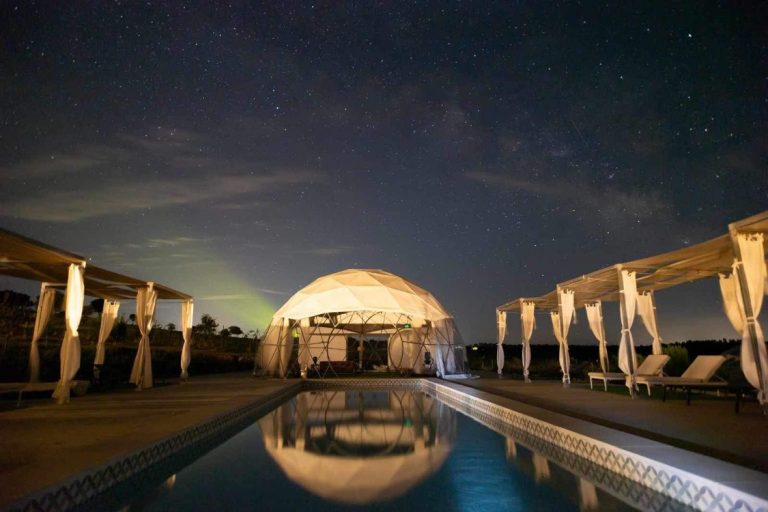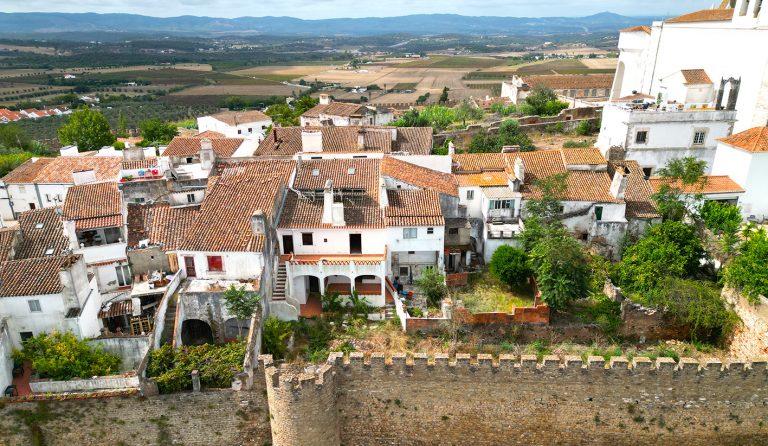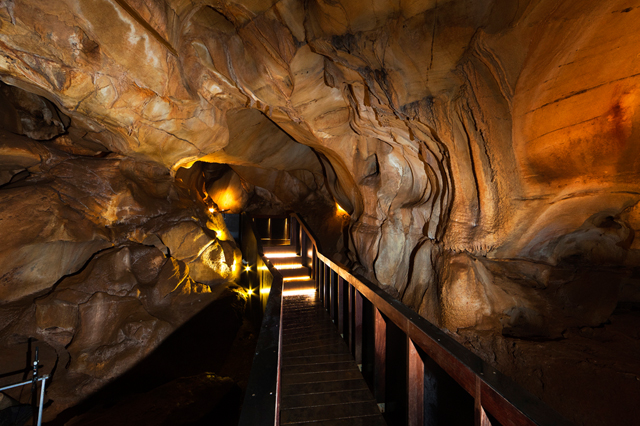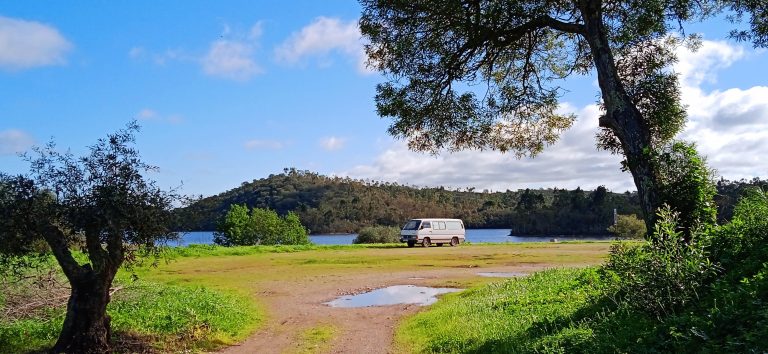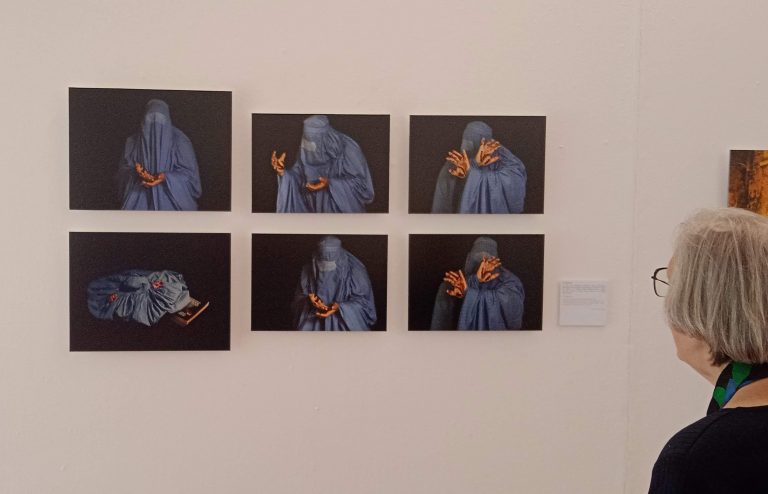For the first road-trip of the year in our van we didn’t want to venture too far from home. The weather was forecast to reach 30° and we were ready to try out camping in an ASA (service area for camper vans) rather than a costly campsite. So checking on the trusty Park4Night app within a 100km radius of Estremoz, we decided on the Viana do Alentejo area, and in particular Valverde and Alcáçovas. With just a little research online we soon found that we would be able to combine country hikes, nature, history, culture and good food in a short two-night stopover. Perfect!
We have passed this church many, many times on our way home from Estremoz and this week our curiosity finally got the better of us. So we stopped off to take a closer look…
The Chapel of Our Lady of Conceição dos Olivais is located at around two kilometres from the centre of Estremoz, on the road to São Bento do Ameixial. Built in the latter part of the 16th Century it sits on a slight hill surrounded by vineyards alongside the ancient ‘Pedra da Ronca’ dolmen – which loosely translates as ‘The Snoring Stone’…
If you are looking for a traditional Portuguese restaurant in Estremoz with no nonsense authentic food, just like it used to be in the old days, then this place is for you.
The Cosmic View Retreat, guided by astrophysicist and Zen teacher Mark Westmoquette, is designed to take you on a journey of yoga, mindfulness and stargazing to discover the cosmic you!
For many, January is the perfect time to join a gym. People are keen to make a fresh start in the new year and up their fitness level, or it could be that you are newly-arrived in Estremoz and are wondering how to continue your regular exercise regime.
This delightful five-bedroom, five-bathroom property is located within the historic walled castle complex of Estremoz, alongside the prestigious 5-star Pousada Estremoz Castle Hotel, the Rainha Santa Isabel tower and the Santa Maria church, offering a great opportunity to own a true piece of Portuguese history.
The Saturday open market in Estremoz was crowded this weekend, with Christmas only a week away. I felt lucky when I managed to find a parking space in the square, and I wandered to the rows of vendors to browse their goods and see the annual Christmas market.
In the municipality of Montemor-o-Novo, the Palaeolithic cave at Escoural is around a 70-kilometre drive from Estremoz. Signposted from Arraiolos, it’s easy to locate and although small, with only one main chamber, it is said to have the oldest cave paintings in the whole of Portugal.
We made the big decision to up sticks and move to Portugal in May 2019 – before Covid, before the war in Ukraine and before Brexit happened! There were both push and pull factors at play, but fundamentally we were not happy with the hedonistic lifestyle in Marbella, had recently started our relationship and therefore a new chapter in our lives, and I had lost one of my best friends who passed far too young. On the pull side, we were on a castle-viewing road-trip around central Portugal in our old ’71 WV bug and were really enjoying the towns, monuments, weather, people, food… So, over a bottle of Estremoz wine, we reached a point of re-evaluation and the thought of spending another 10-15 years working in an office (and garage) lead us both to make a major change.
In Limbo is a new photographic art exhibition being hosted at the Estremoz Municipal Museum during the summer months. Running through August until 10th September, and sponsored by Amnesty International, it showcases a series of photographs by Carmen Serejo, depicting humanitarian displacement and the refugee crisis across the world today, including in Syria, Ukraine, Afganistan and Mexico.

